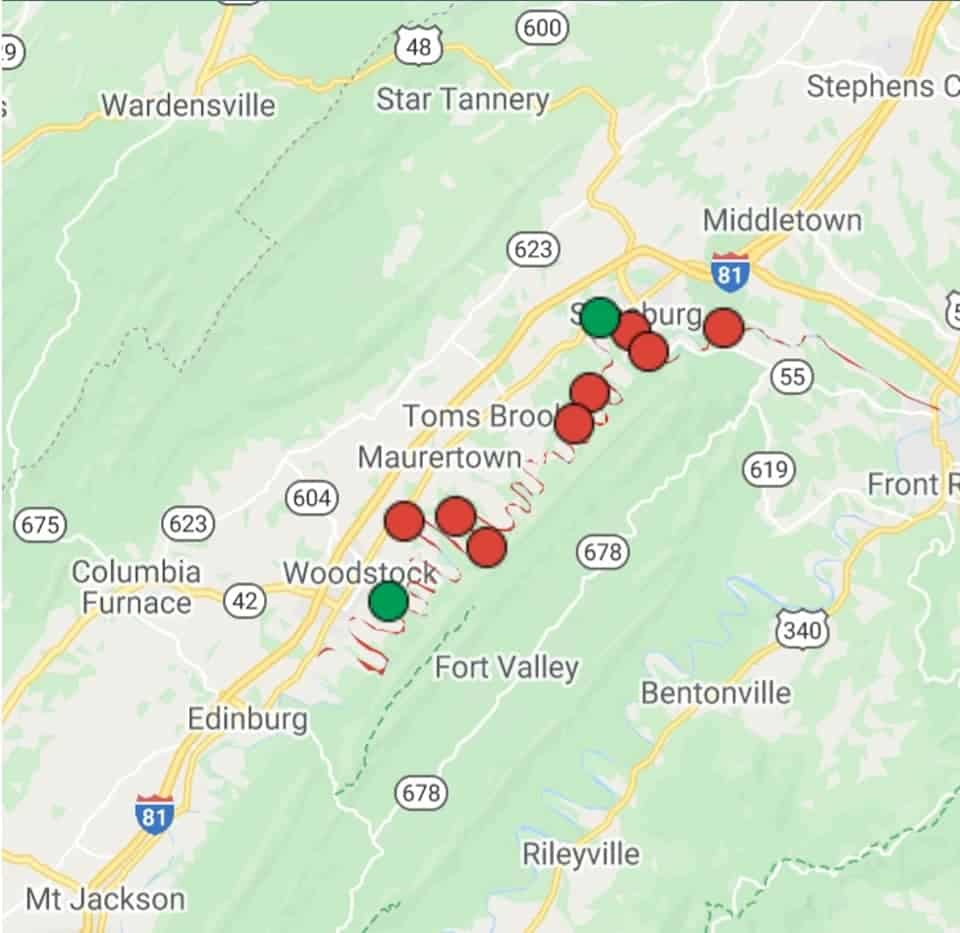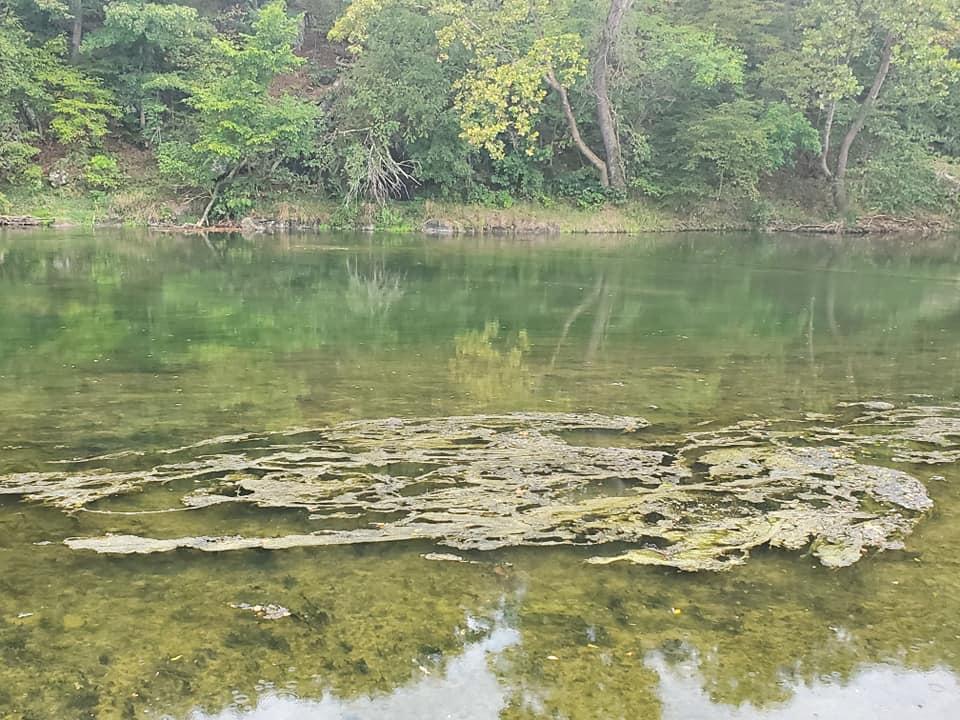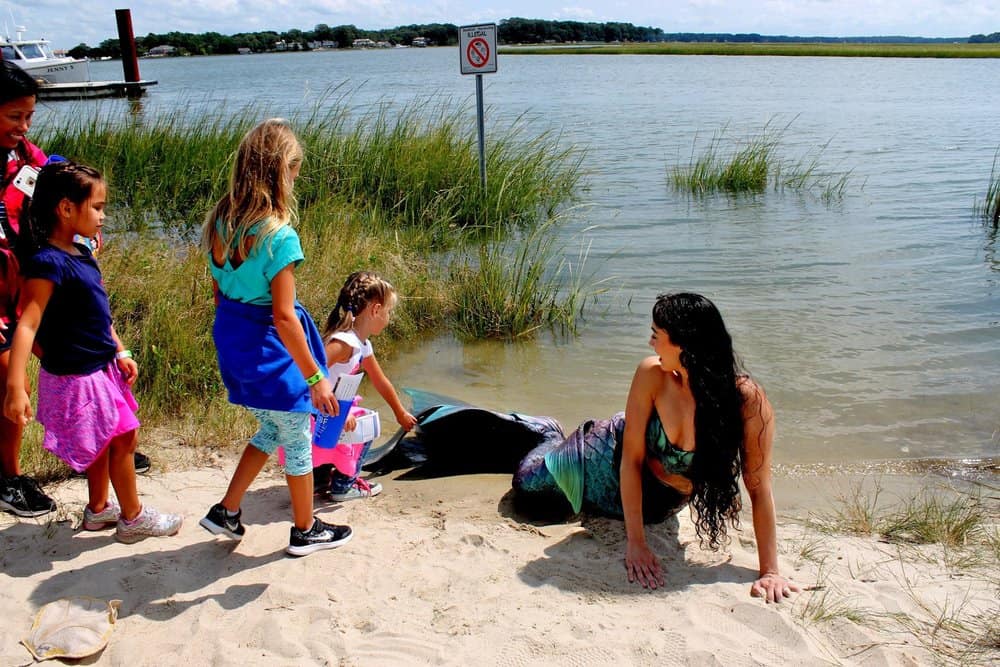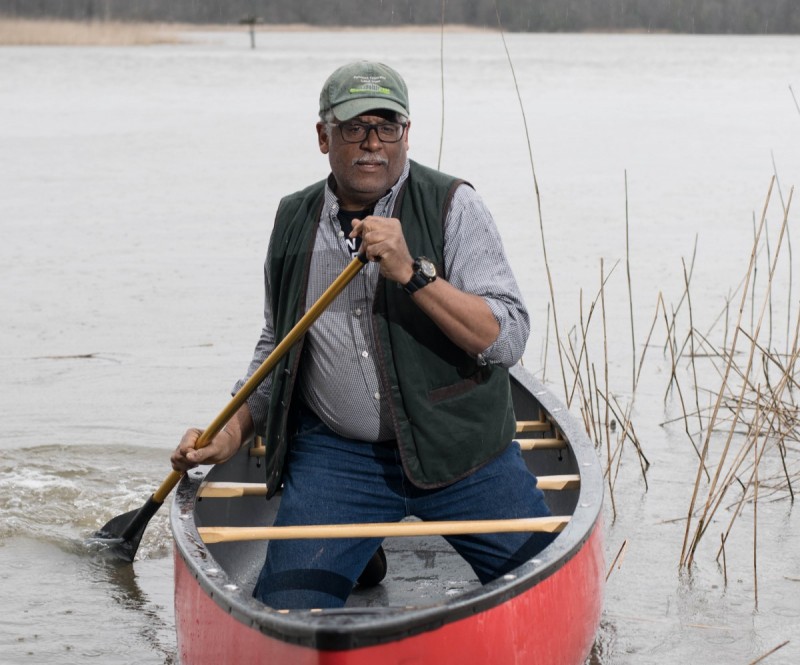Last week, the Virginia Department of Health (VDH) closed the 52.5-mile section of the Shenandoah River’s North Fork to water contact for people and dogs because of harmful algae blooms. It’s the first time they’ve ever resorted to this measure.
The VDH health advisory waters extend from the Deer Rapids Boat Ramp at Willow Grove downstream through Strasburg to the Riverton Boat Ramp near Fort Royal in Shenandoah and Warren counties. The cause VDH cited is toxic mats of green and blue-green algae (slimy or scummy materials) found in several areas of the river, lying on the bottom, floating on the surface, and collected along shorelines. Drinking water plants at Woodstock, Strasburg, and Winchester are working with state and county officials to protect the quality drinking water and continue to monitor for algal toxins at the plants’ intakes.

You can check VDH’s interactive map for updates here.
It’s a bad time for these blooms. In summer, this section of the North Fork is popular for swimming, tubing, boating, and fishing. VDH’s advice is, When in Doubt, Stay Out! Avoid swimming, wading, or letting your children or pets play in bodies of water that smells bad, looks discolored, or contains scum or algal mats that are widespread along the surface or the bottom.
Chesapeake Bay Foundation (CBF) Virginia Senior Scientist, Dr. Joe Wood, said in a statement:
“During the hottest part of the summer and peak of recreation on the Shenandoah, it’s a shame that people must stay out of the water to avoid toxic algae fed by pollution. These harmful algal blooms are a serious threat to our waterways and quality of life. Thankfully, Virginia is developing standards and pollution limits to protect people and river life from harmful algal blooms in the Shenandoah River. But these criteria aren’t yet final. The State Water Control Board should adopt and implement criteria to protect the Shenandoah from harmful algal blooms when they meet late this year.”
Wood also tells Bay Bulletin that the way to combat harmful algal blooms is to prevent phosphorus and nitrogen from entering streams from roadways, parking lots, farm fields, and other runoff sites.
“Virginia’s General Assembly made some valuable investments in wastewater treatment and septic systems during the recently completed special sessions that will help reduce the risk of such summertime blooms. We also applaud the efforts of all the Shenandoah Valley farmers who are fencing livestock out of streams, planting woody buffers along them, providing alternative watering sources, and installing other conservation practices.”
As Wood points out, investing in these strategies will make for fewer closures and more chances to enjoy Virginia rivers like the Shenandoah.
“Clean water is a precious right, and we all need to work towards protecting it.”
–John Page Williams




